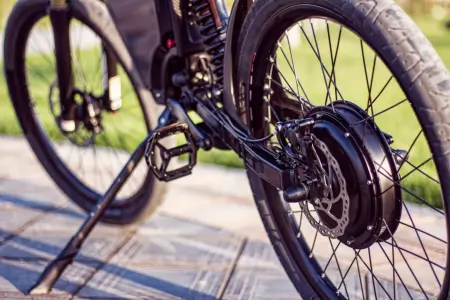
Mountain biking is a thrilling sport. You only have to try it once to understand. Mountain bike riding involves human power on off-road trails, whereas, e-mountain biking uses electric bikes. This distinction changes the experience significantly, specifically for each bike type. Mountain Bikes versus e-Versions, let’s explore the differences.
The Bikes
The key difference between the two types is how they generate power. Mountain bikes are purely mechanical. They rely on their humans for movement. E-mountain bikes on the other hand, still require humans, but use electric motors that assist movement. These motors multiply the rider as they pedal the bikes.
Terrain and Accessibility
Mountain biking is about conquering all types of terrain. Steep hills and rough trails challenge the rider. E-mountain biking addresses some of the difficulties. The electric assist helps riders pedal over long distances or up steep inclines. This makes challenging trails more accessible.
Physical Demand
Riding a mountain bike is physically demanding. It requires strength, endurance, and technical skill. E-mountain biking reduces the physical impact experienced. The motor assists in general pedaling, climbing and acceleration. However, battery life limits e-mountain bike range. Particularly, when the battery output is set to the maximum.
Speed and Range
Both bike types have limits set by the rider’s ability. Rider pedaling drive both bikes. E-mountain bikes can go faster, thanks to the motor, but riders can still get a workout. For the same distance and time on both bikes, the effort will be lower on the e-mountain bike. Conversely for the same effort, the distance and time will be longer on the e-mountain bike.
Skill Development
Mountain biking sharpens technical skills. Riders learn to navigate challenging terrain as they move through the trails. E-mountain biking also requires the same technical skill. However, the focus may shift towards managing the bike’s power. It’s important to note that both bike types improve biking skills, just differently in some respects.
Environmental Impact
Both bike types impact trails. Cornering, skidding, and riding around mud, instantly come to mind. Mountain bikes do so with less significance because they are lighter. E-mountain bikes are heavier, which can lead to more wear on trails. However, and this is important, riders play a key role. Responsible riding can minimize these impacts.
Cost
Mountain bikes can be expensive, almost prohibitively so. For example, they can cost upwards of $10,000 CDN with high-end parts. E-mountain bikes cost more due to their technology, perhaps another $1500 CDN. The price difference reflects the electronic components. Maintenance costs for e-mountain bikes can also be higher because of this.
Community and Culture
Mountain biking has a well-established community. It values physical prowess, a connection to nature, and of course, having fun. E-mountain biking is creating its own culture with many of the same values. It emphasizes accessibility and enjoyment of the outdoors. Both communities value camaraderie and trail stewardship.
Mountain Bikes versus e-Versions, each offers unique experiences. The choice depends on what you seek from biking. Whether it’s the challenge, or the joy of exploration, both have their place. They enrich the biking world together.






